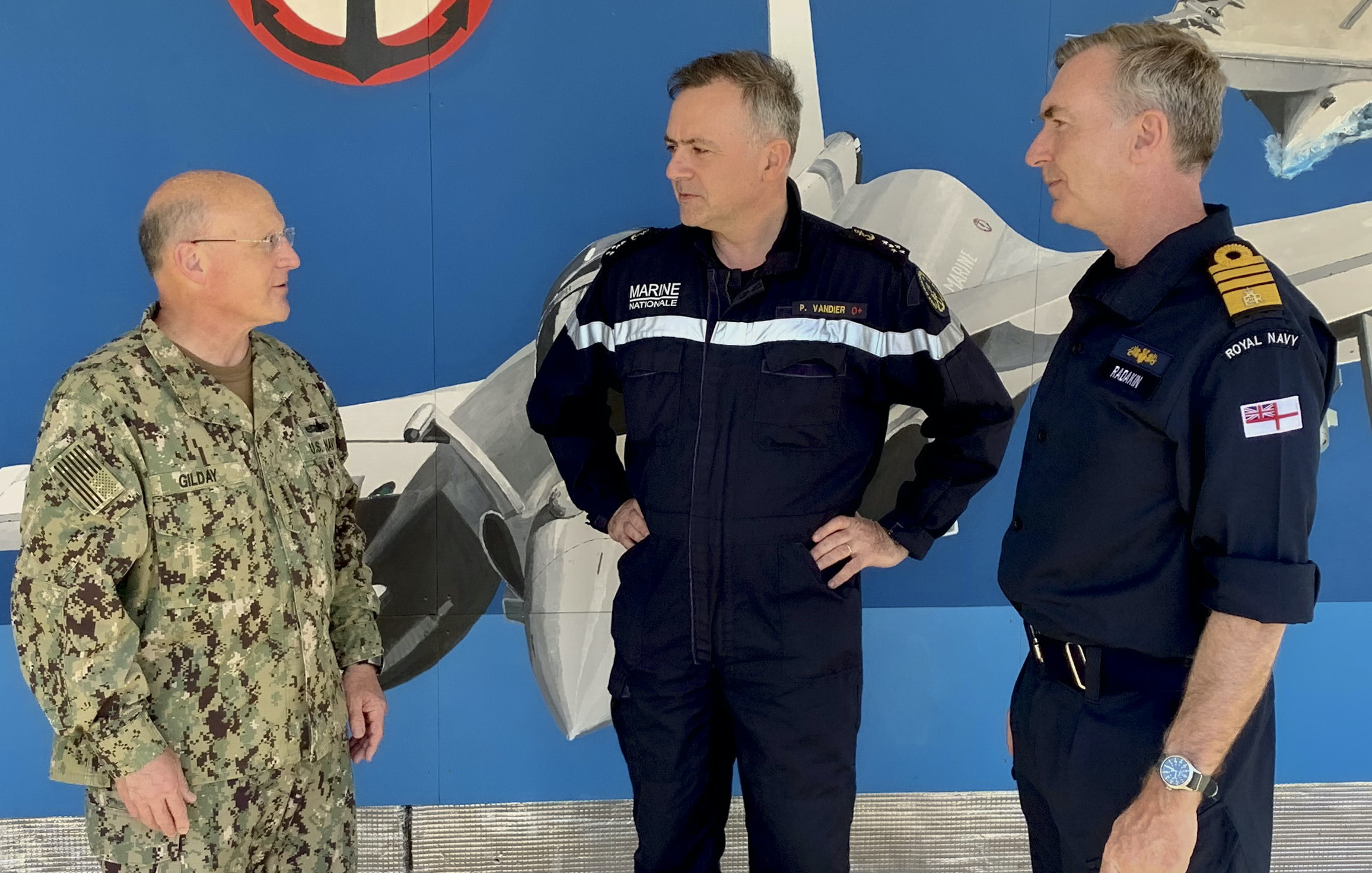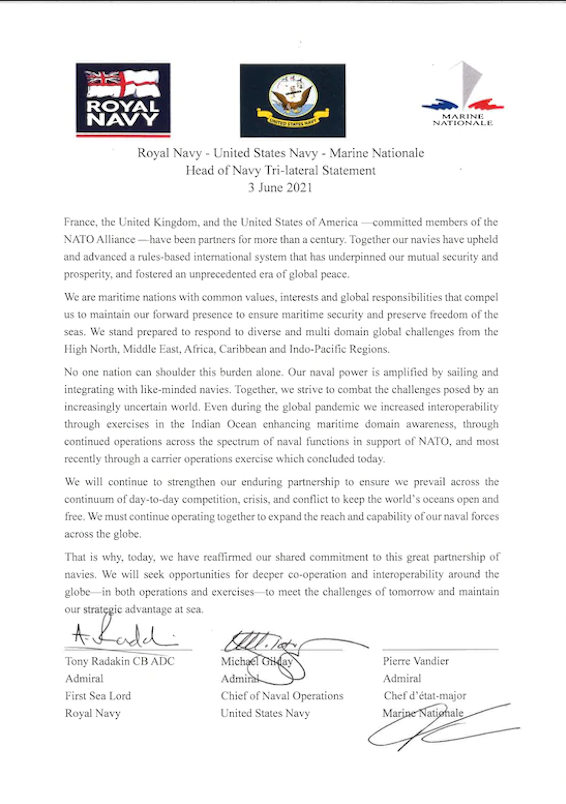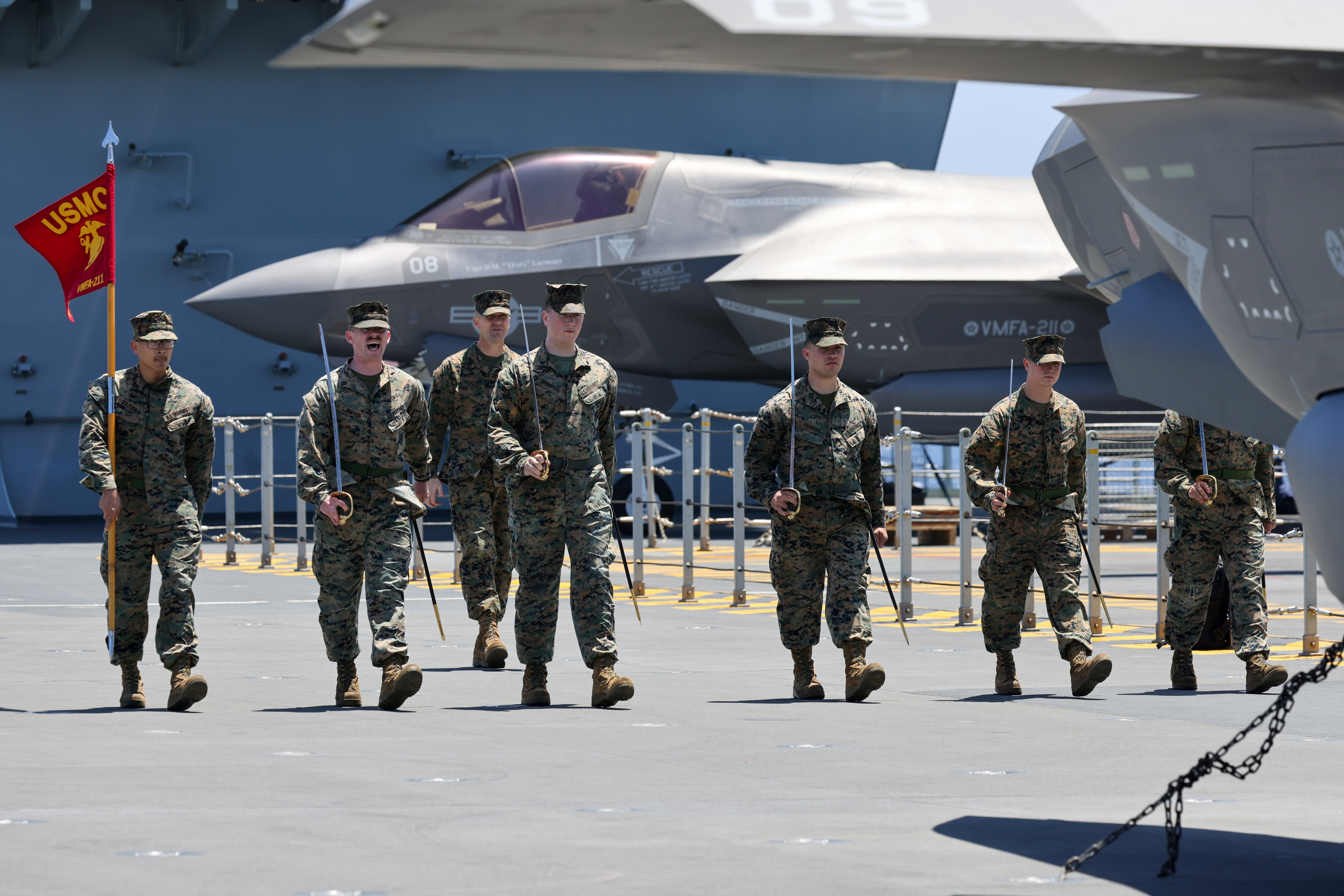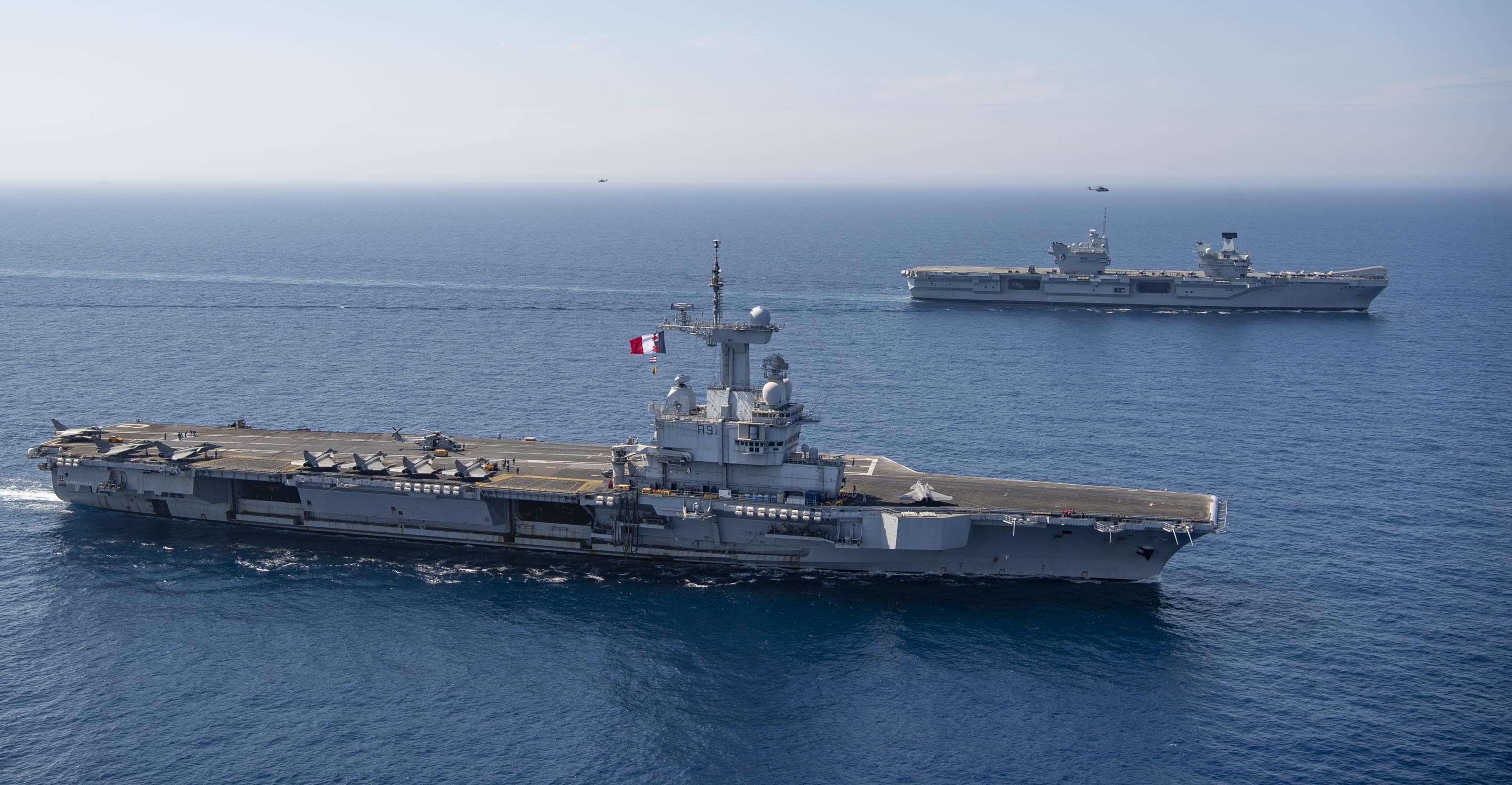
After signing a new trilateral agreement pushing for deeper cooperation, the top officers of the American, French and British navies signaled that their naval forces are in a new era of seamless command and control.
Speaking at a press conference in Toulon, France on Thursday, Adm. Pierre Vandier, chief of the French Navy, said “cooperation is very important” for the three allies as they operate far from NATO’s traditional waters. He and Chief of Naval Operations Adm. Mike Gilday cited the joint operations of FS Charles DeGaulle (R-91) and the USS Dwight D. Eisenhower (CVN-69) strike group as to how far seamless command and control and information and intelligence sharing had progressed.
“Our interoperability is grounded in trust,” Gilday added.
The three last met a year ago to sign an agreement “to ensure that we are able to operate together at the highest level,” Vandier said in a news release about the meeting.
The U.K. Royal Navy’s First Sea Lord Adm. Tony Radakin added, “we frequently go a step further to interchangeability” because of the trust built up over years of exercising together and operating together. He was alluding to the “Wake Island Avengers” of U.S. Marine Fighter Attack Squadron (VMFA) 211, a squadron of F-35B Lightning II Strike Fighters currently deployed aboard HMS Queen Elizabeth (R08) and that recently participated in a NATO exercise.
 Vandier used the recent Steadfast Defender 2021 as an example of that level of interchangeability, particularly in missile defense of maritime forces and how the U.S. could reinforce Europe from North America in a crisis. It was the largest NATO exercise of the year.
Vandier used the recent Steadfast Defender 2021 as an example of that level of interchangeability, particularly in missile defense of maritime forces and how the U.S. could reinforce Europe from North America in a crisis. It was the largest NATO exercise of the year.
“We’re going to join ourselves” together in the different parts of the exercise to work more smoothly in conflict; and by doing that, it reassures other nations the alliance “will be there” when needed, Vandier said. “Cooperation is higher and higher every day.”
Radakin said cooperation extends to coordinating deployments that also allow regional allies and partners to train with the American, French and British fleet.
The three navies all have nuclear-powered ballistic missile submarines and now have large-deck carriers operating fixed-wing aircraft.

Radakin said of Queen Elizabeth: “this is NATO’s aircraft carrier” but allows the United Kingdom “to stretch out to the Indo-Pacific” and work with allies and partners there.
“The Royal Navy’s CSG21 deployment is a clear demonstration of this: a Royal Navy carrier, which will become the NATO carrier, supported by allied fighter jets, frigates and destroyers, working as one,” he said in a joint release on the trilateral agreement.
The United States, U.K. and France “all have these floating airfields … a phenomenal capability,” he said at the Toulon press conference.
The three senior officers defended the carriers as a platform for the future.

“The absolute proof of that is all the major navies are investing in them,” Radakin said.
Gilday added, “think mobility” when assessing a carrier’s value, noting it could one day be in Gibraltar and the next day at the Suez Canal. They also are versatile, he added. In the more than half a century of active service, USS Enterprise (CVN-65) had 59 different types of aircraft that flew from the carrier’s deck.
“As we look to the horizon, we recognize that common challenges will only continue to increase in scale and complexity,” Vandier said in the press release on the pact.





